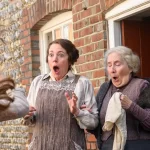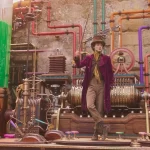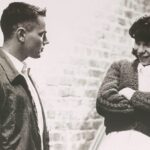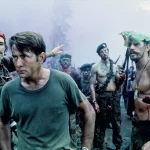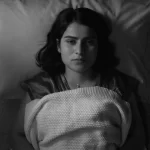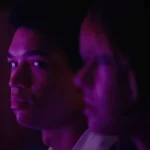I, Tonya: Here’s Why, by David Bax
If nothing else, Craig Gillespie’s I, Tonya is one of the best needle-drop movies of 2017, even directly challenging its competitor Guardians of the Galaxy Vol. 2 on Fleetwood Mac’s “The Chain” and coming out ahead. Add to that Chicago’s “25 or 6 to 4,” Laura Branigan’s “Gloria,” and tracks from Siouxsie and the Banshees, Dire Straits and Heart and you’ve got a stellar rock playlist. Fortunately, Gillespie rides that boisterous rhythm to tell a heartfelt story that not only restores some justice to an unfairly maligned tabloid figure but also gets to the heart of some ugly truths about American culture and femininity.
I, Tonya’s framing device is a series of interviews, meant to be from the late 90s, with the main characters, Tonya Harding (Margot Robbie), her mother, LaVona (Allison Janney), Tonya’s husband, Jeff Gillooly (Sebastian Stan), and Jeff’s friend Shawn Eckhardt (Paul Walter Hauser) recounting their versions of the events starting in Tonya’s 1980s childhood and culminating in the 1994 attack on Nancy Kerrigan and subsequent media coverage, investigation and trial. Not only do these accounts sometimes contradict each other, Rashomon-style (so much so that characters inside other character’s accounts will turn to the camera to insist, “I never did this”), but the later interviewees seem to be aware they’re part of the movie, commenting on things like when their personal storylines are being overlooked.
It’s not exactly Dunkirk but the jumbling of timelines and the overlapping unreliable narrators keep the viewers on their toes while also commenting on how our own memories of these events, cobbled together from trashy infotainment sources, may not line up with the truth. Invigoratingly, Gillespie and screenwriter Steven Rogers have the courage of their convictions in this area; even at the end of I, Tonya, we can’t say for sure how it all went down. The only constant is Gillespie and cinematographer Nicolas Karakatsanis’ aesthetic. Though the interviews are in 1.33 and the rest of the film in scope, the movie consistently apes the over-lit tactility of video, recalling the format by which we would have first been introduced to these events by TV news programs.
What we didn’t get from those reports, at least not fully, was an account of Harding’s life and past. We thought we knew what she was, summed up by the callously glib term “white trash,” but how could we have grasped how fully her life had been defined by abuse, first at the hands of her mother and then from Gillooly? In fleshing this out, Rogers owes a debt to Nanette Burstein’s terrific 2014 made-for-TV documentary, “The Price of Gold.”
But it’s mostly to the credit of Gillespie and his cast that they explore this terrain so thoughtfully in the middle of a comedy. That’s chiefly what I, Tonya is and it doesn’t compartmentalize into funny scenes and serious ones. Often, the domestic violence works as a sort of anti-punchline; an argument will be staged just to this side of screwball, with Harding and Gillooly chasing each other back and forth through their modest Portland home and then, suddenly, he socks her in the jaw and we’re reminded that this is real and that these people are not for our amusement. It’s a tricky balance but Gillespie nails it, making I, Tonya a far better dark comedy about white, low-income Americans than the overpraised Three Billboards Outside Ebbing, Missouri.
There’s no question that, whatever happened exactly, Nancy Kerrigan was the victim. Yet it was all too easy for us to see Tonya Harding as the villain. Kerrigan (who, it should be stated, did not come from a wealthy background any more than Harding did) looked and acted the part of the figure skater, demure and classically feminine. Harding never fit that mold and, long before she became a household name for her involvement in a terrible crime, she was made to pay for that. None of this gets her off the hook but the metaphor for the struggles of being a woman in a society that so rigidly defines womanhood is a potent one. I, Tonya is more than that, though. It’s an argument that the freedom to express oneself—in art, in politics, in academia, in sport—is crucial for all people, even poor folks unable to rise to the standards of the gatekeepers who say, “Our way.” All that plus some laughs and a hell of a soundtrack? It’s gold.


